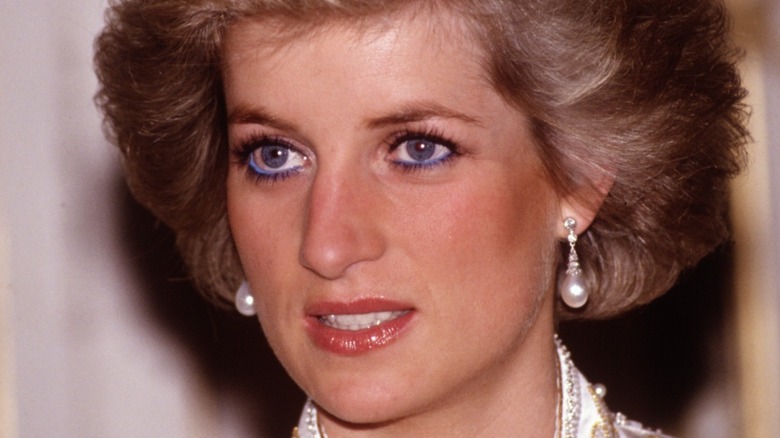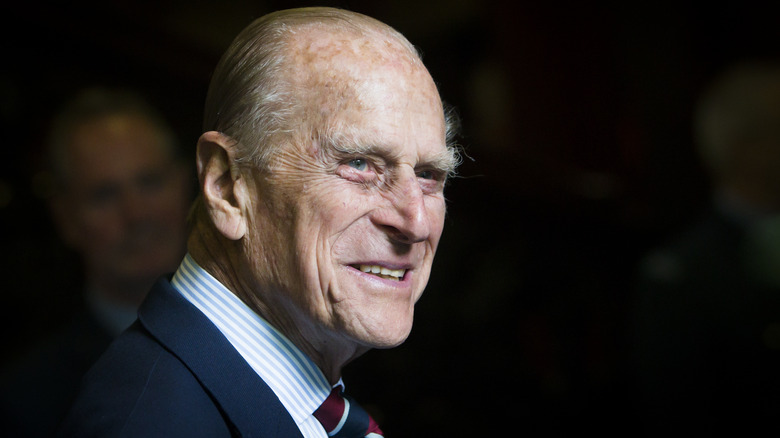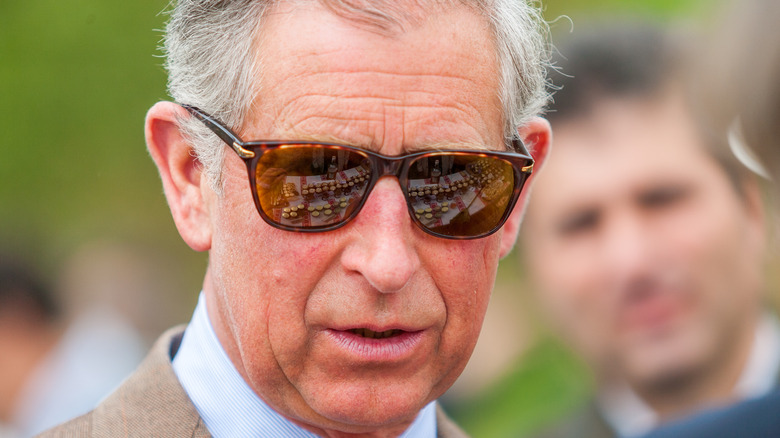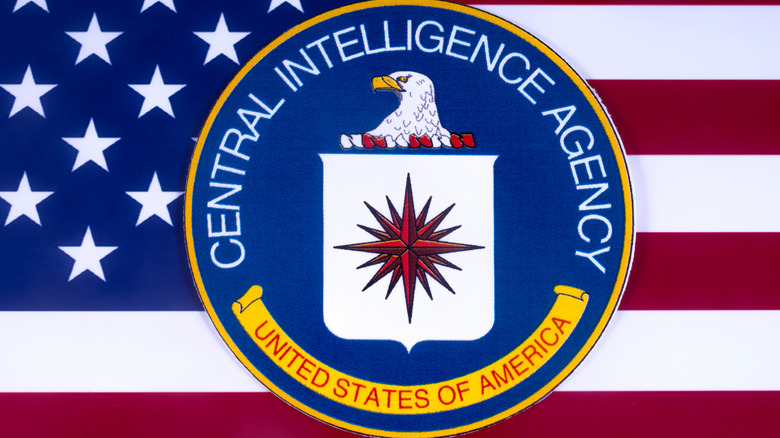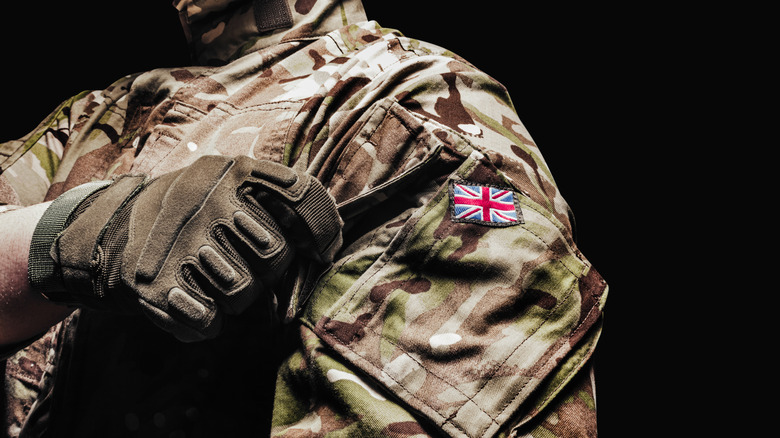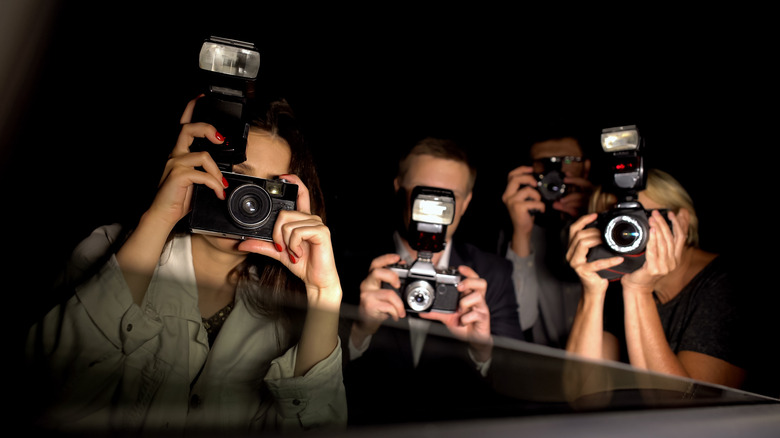The Many Conspiracies Surrounding Princess Diana's Death Explained
When the news broke on August 31, 1997 that Princess Diana had died in a car crash (via the History Channel), it not only broke the hearts of the nation who'd once embraced her as their future queen, but shocked and devastated millions around the world who'd been touched by the beauty, grace, and warmth of the "people's princess." In the U.S., millions set their alarm clocks for the wee hours to tune in to her funeral service at Westminster Abbey and sobbed until there wasn't a dry Kleenex left in the house as Sir Elton John performed his heartbreaking tribute, "Goodbye, England's Rose" (via YouTube).
The world had barely dried its eyes, however, before the conspiracy theories started popping up, as they do when any prominent person dies before their time. The most notorious example of such postmortem conspiracy theories is, of course, being JFK, whose death is still shrouded in mystery nearly 60 years later. While Kennedy was a sitting president who'd gotten on the wrong side major players including the Soviets, the Cubans, the mafia, and even his own CIA, Diana was a different story. At the time of her death, she had already divorced out of the British royal family, which also happens to be a group that doesn't make a habit of bumping off anyone who causes them any headaches (otherwise Oprah might well be on the palace hit list). Still, conspiracy theorizers gonna theorize, and Diana's death provided ample fodder for this.
Diana's boyfriend's father blamed Prince Phillip for her death
One of the most prominent people to start slinging around conspiracy theories after Princess Diana's death was Mohamed Al Fayed, the owner of high-end department store Harrods. Mohamed is the father of Dodi Fayed, who was dating Diana at the time of her death and who also lost his life in the car crash. As the The Guardian reported, Mohamed claimed that Diana told him she was pregnant and that she planned to marry his son, although friends of the princess felt that there was no truth to either of those claims.
According to Mohamed, Prince Philip simply couldn't stomach the thought of an Egyptian Muslim playing stepfather to Princes William and Harry. While Mohamed didn't suspect Phillip himself of pulling the trigger (metaphorically speaking, since no actual bullets were involved), he did feel that Philip had arranged a hit with the help of the queen's private secretary, the British ambassador to France, and Diana's own chauffeur. Mohamed also named a photographer, James Andanson, as being the one who actually made the accident happen. Andanson died an apparent suicide in 2000, but NBC News reported that a 2008 inquest found no evidence supporting his involvement in Diana's death.
Diana herself may have suspected the royals of arranging a hit
According to stories that came out after her death, Princess Diana allegedly feared for her life on more than one occasion (via Newsweek). Her butler, Paul Burrell, came forward with a note she was said to have written that lobbed quite a grenade. "My husband is planning an 'accident' in my car, brake failure and serious head injury in order to make the path clear for [Prince] Charles to marry Tiggy," (Tiggy Legge-Bourke had been nanny to the young Princes William and Harry). The 800+ page "Operation Paget" report generated by the Metropolitan Police detailing their investigation into the princess's death stated that Charles had no knowledge of this note, nor did he ever have any plans to marry Legg-Bourke. As NBC News reported, though, Burrell himself admitted that he'd included a few "red herrings" in the testimony he gave regarding events leading up to the death.
Diana is also said to have expressed to her private secretary, Patrick Jephson, as well as her lawyer, Victor Mishcon, that she suspected a car accident was going to be arranged that would either kill or seriously disable her, and that she also believed that Camilla Parker Bowles was to be "put aside." Neither Jephson nor Mishcon put much credibility in the fears she's said to have expressed, though. Decades after this conversation took place, Parker Bowles is still alive and well and going about her business as a senior royal.
The CIA even came under suspicion
Whenever there is an unexpected death of anyone even tangentially connected to the political powers that be, there are always those who are going to believe that the CIA's been up to dirty tricks. It's kind of the old "butler dunnit" trope of Golden Age mystery fame, only with a lot more evidence to back it up. While the ranks of homicidal butlers, both real and fictional, are rather thin, the Central Intelligence Agency has been known to employ deadly force on more than a few occasions.
As to why the CIA would possibly want to knock off the mother of a teenage future king, supporters of this theory allege that the British government had enlisted the agency's aid to arrange the Paris assassination. John Macnamara, security chief of Harrods department store, even undertook an investigation on behalf of store owner Mohamed Al Fayed to see whether he could uncover any credible evidence of such a plot, but was evidently unable to do so. A CIA spokesmen characterized the idea of the agency's involvement in Princess Diana's death as "ludicrous" (via The Irish Times), while the Paget report indicated that the CIA was not in cahoots with M16 (it's U.K. counterpart) to arrange the death, and that neither agency were likely to have been involved in the accident at all.
British special forces were also accused of causing the fatal car crash
In 2014, the Daily Mail published a rather sensational tale. It came from the ex-wife of a sniper with the SAS, which is Britain's answer to the Special Forces (according to Elite UK Forces, the acronym stands for Special Air Service). She made the shocking claim that she was given £500 in a plain brown envelope to keep quiet about Princess Diana's death, and the part her husband — known only as "soldier N" — was alleged to have played in bringing it about.
According to the woman, referred to by the newspaper as "Sarah" (not her real name), one SAS soldier shone a bright light directly into the eyes of Diana's chauffeur as the Mercedes he was driving pulled into the Pont d'Alma tunnel. After the car crashed, another soldier immediately checked the wreck and, upon finding the princess badly injured, signaled to the rest of the soldiers involved that their "mission" had achieved its goal. While some witnesses report seeing lights flashing around the time of the crash, flash photography was still a thing in the pre-digital age. As the Paget report indicated, the chauffeur had already lost control of his vehicle before reaching the tunnel, something that effectively debunks the SAS theory.
The paparazzi came under suspicion
While there is little doubt that unwanted attention from the paparazzi played a role in the crash that took Princess Diana's life, the Independent tells of some who believe that overly-aggressive photographers may have deliberately set up the accident. While Diana's death continues to provide tabloid fodder even to this day, and no doubt those accident-scene photos have been raking in the royalties over the years, this is one conspiracy theory that really won't fly.
As the Paget report pointed out, paparazzi seldom, if ever, join forces with each other and are hardly likely to team up to carry out a large-scale illegal operation. They are more apt to compete than to cooperate in any way. While the Metropolitan Police confirmed that the photographers' actions may well have led to the accident, they dismissed the idea that these actions were anything other than paparazzi being paparazzi: always annoying, but not actually criminal.
